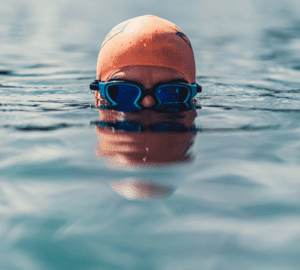How to buy a wetsuit
Buying the right wetsuit based on your swimming goals, ability and budget may not only save you money in the long run, but also help to support good swim technique, prevent injury and improve performance. So what makes a really good wetsuit and what is right for you? Angus Greenwood of Yonda explains how to choose a wetsuit based on budget and performance.
First, it is important to differentiate between water sports and swimming wetsuits. Many newbies make the mistake of buying cheap thinking all wetsuits are fit for purpose. Designed simply to keep you warm and buoyant, traditional water sports wetsuits tend to be made of cheaper, thicker and less flexible open neoprene. They can restrict movement and absorb water, making them heavy and fatiguing. Swim wetsuits are specifically designed for swimming. They are made from super flexible neoprene covered by a hydrophobic closed skin. This makes them light, buoyant and hydrodynamic through the water, helping to put the swimmer in an optimal swimming position. Swimming in a well-fitted swim wetsuit won’t increase fatigue and may even improve swim performance.
What are your goals
and budget?
If you are new to open water, try to attend a demo day or hire a wetsuit to see if you are going to enjoy it. If you’re going to be an occasional open water swimmer or just doing a charity event, then borrow, hire or buy a quality suit that fits. If you plan to commit to regular open water swimming, invest in a quality swim wetsuit that supports your goals and swimming ability. For most that is around £180-£350.
If you are a good competitive swimmer or multisport athlete, you should be looking at a higher end racing wetsuit like the Yonda Spirit ll or Ghost ll that offers the best hydrodynamics and performance.
If you are a newbie, or less technically able swimmer, building for a swim challenge, consider a mid-range wetsuit that still delivers great flexibility and performance such as the Yonda Spook or Spectre. For ‘apples’ and ‘pears’ a better option may be to invest in a bespoke tailored wetsuit: Snugg make great made-to-measure swim wetsuits from £350.
Fits like a glove not a straight jacket!
A poorly fitting £1,000 wetsuit will be worse than a great fitting £50 second-hand wetsuit. The correct body length combined with flexibility around your shoulders/torso are the most important parameters of how well a wetsuit fits and performs. If the body of the wetsuit is too short or narrow, it will restrict your movements and breathing. Likewise, if the shoulders of the wetsuit are too tight, they will restrict movement, resulting in fatigue and poor stroke technique. If the wetsuit is too big, it is likely to flood with water, making it heavy and fatiguing.
Wearing a wetsuit for the first time can feel claustrophobic. Don’t panic! An open water swimming wetsuit is designed to fit like a second skin. However, you should still be able to breathe! Once on, flush your wetsuit with water, this will slightly lift the neoprene away from your body, the water acting as a lubricant as well as keeping you warm.
Buoyancy, technique and stroke
Women tend to have greater natural buoyancy and more propulsive leg kick compared to men and therefore they typically sit higher and more horizontal in the water. It is really important to match the buoyancy of the wetsuit to the swimmer and their technique. Swimming in an over-buoyant wetsuit can result in back hyperextension and injury. Cheap wetsuits tend be made from thicker and over buoyant neoprene and can be a cause of such issues. Swimming breaststroke in a wetsuit is challenged by the resistance of the neoprene in the legs and the buoyancy. A half-leg wetsuit makes a significant difference.
Salt or fresh water?
Salt water swimming requires less buoyancy because it naturally lifts you into a higher body position. If, however, you plan to swim mainly in fresh water and your body position isn’t optimal, then you may want more buoyancy support from your wetsuit. Buoyancy panels support a more horizontal body position in the water, reducing drag and improving performance.
Know your neoprene

The thicker the neoprene, the less flexible but more buoyant and warm the suit will be. Entry level wetsuits tend to use thicker neoprene, whereas racing wetsuits use thinner and flexible high-performance neoprene.

Flexibility in the shoulder and torso panels is vital to fit and performance.

The hydrophobic skin of a swim wetsuit reduces surface resistance, making the wetsuit more hydrodynamic through the water. This skin can be easily snagged by sharp items.
–
www.outdoorswimmershop.com








